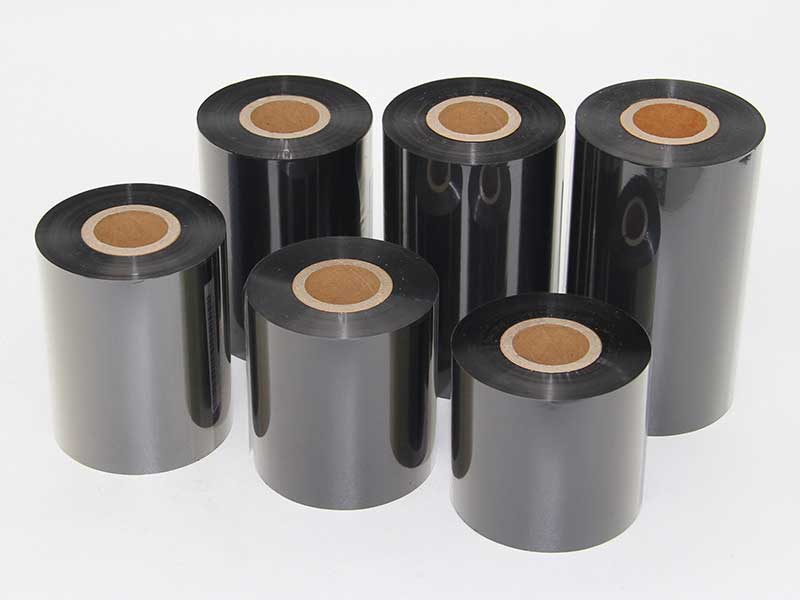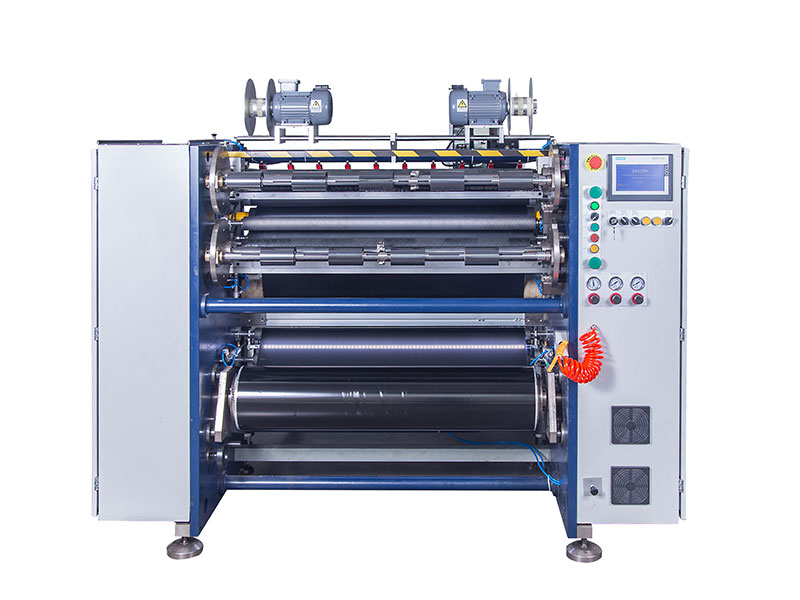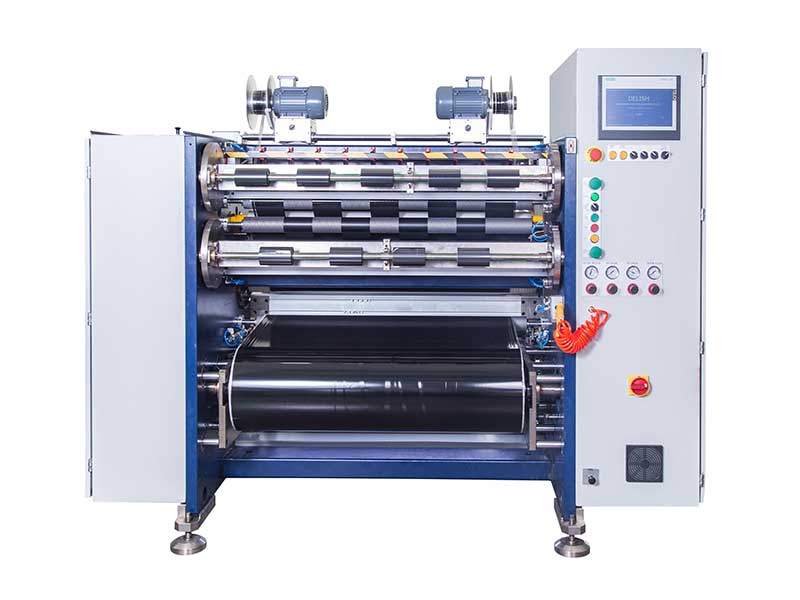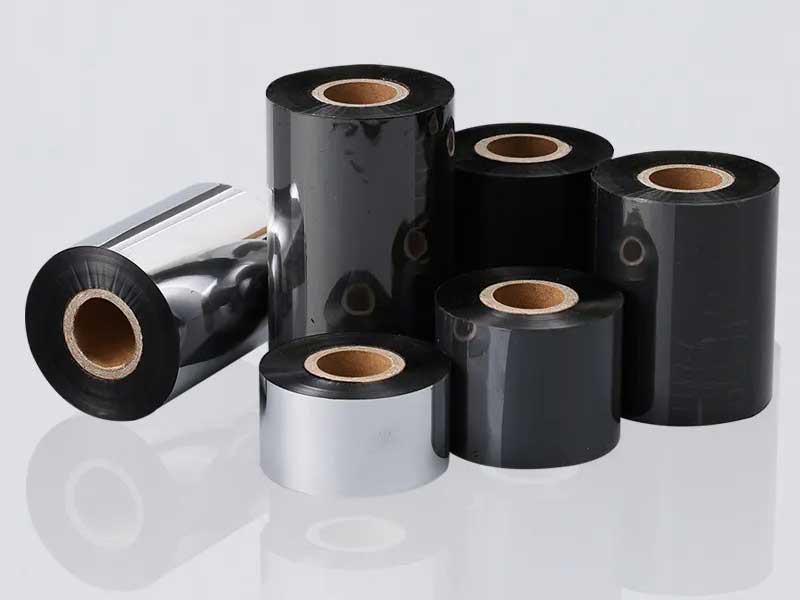In the thermal transfer ribbon manufacturing industry, the word "volume" carries a dual meaning. At first, it represents the internal state of production: the "volume" of production - that is, involution, fierce competition, enterprises fall into the quagmire of price wars and homogeneous competition, with meager profits and limited development. In the end, it points to the external form of the product: the "volume" of the finished product - that is, rolls of high-quality, high-precision, and ribbon products that meet the needs of diversified markets.
To open up the path from "involution" to "output volume", its core hub and key engine is the ribbon slitting machine. It is not only a simple slitting tool, but also a strategic equipment for enterprises to break through capacity bottlenecks, release scale effects, and ultimately get rid of inefficient competition.

First, what is the bottleneck: the dilemma of "volume" in the production of ribbons
Before analyzing the role of the slitting machine, we must first understand the bottleneck of ribbon production. There are several key blockages in traditional or primary ribbon production processes:
1. Contradiction between master roll and demand: The ribbon coating production line produces giant "Jumbo Roll" with a width of more than 1.5 meters and a length of tens of thousands of meters. The market demand is for "sub-rolls" (finished rolls) ranging from a few millimeters to hundreds of millimeters in width and tens to hundreds of meters in length. This huge physical divide is the primary bottleneck.
2. Dilemma of slitting efficiency and accuracy: Relying on old or semi-automatic slitting equipment is slow, poorly precise, and time-consuming to change tools and specifications. This not only limits the output speed, but also causes high material loss and defective products due to problems such as burrs, splits, and uneven tension during the slitting process.
3. Manual dependence and consistency problems: highly dependent on the operational experience of skilled workers, product quality fluctuates greatly, and it is difficult to achieve standardization and scale. Personnel fatigue, mobility and other problems directly restrict the stability and scalability of production capacity.
These bottlenecks have led to enterprises falling into "involution": unable to quickly respond to flexible orders in small batches and multiple batches, unable to undertake large-scale orders, high production costs, and can only compete in the same Red Sea market. At this time, the production capacity is firmly locked, and the scale effect cannot be talked about.

Second, breaking the game: how to break through the bottleneck of high-performance slitting machines
Modern high-performance ribbon slitting machines accurately break through each of the above bottlenecks through their automation, high precision and high speed.
1. Break through the physical gap and realize the large-scale transformation of "one change"
The core mission of the slitting machine is to efficiently and non-destructively convert the master rolls into thousands of finished rolls that meet customer requirements. An advanced slitting machine is capable of slitting dozens or even hundreds of ribbons of different widths at high operating speeds (e.g. more than 600 m/min). This directly solves the fundamental contradiction between master coil and market demand, and transforms the huge original production capacity into marketable actual production capacity.
2. Improve accuracy and efficiency, reduce losses, and release "hidden" capacity
• High-precision tension control: Maintain constant and precise tension throughout the whole process from unwinding, slitting to winding, ensuring that the coil is flat, without wrinkles, and without tensile deformation, which greatly reduces the scrap caused by tension problems.
• Intelligent tool holder system: The tool holder driven by servo motor is adopted, and the tool changing specification can be switched with one key through the program, and the accuracy can reach ±0.05mm or even higher. This significantly reduces downtime and improves overall equipment effectiveness (OEE).
• Online Defect Detection: Integrated visual inspection system monitors and marks defects in real time during high-speed slitting or automatically rejects them in subsequent processes, ensuring high consistency of outgoing products.
These technologies directly reduce material losses (from possibly more than 5% to less than 1%) and free up "hidden" capacity tied to inefficient equipment and manual operations by increasing speed and reducing downtime.
3. Automation and intelligence, reduce human dependence, and stabilize output quality
The automatic slitting machine realizes the automation of the whole process or most of the process from winding, threading, slitting, to labeling and rolling. The operator's job shifts from high-intensity, high-skill "operations" to "monitoring and scheduling." This brings:
• Predictability and stability of production capacity: The machine can operate stably 24 hours a day, and the output of production becomes a clear math problem, which is convenient for production planning and delivery time management.
• Consistency of quality: The standard products set by the machine parameters avoid fluctuations in human emotions and ensure a high degree of consistency between batches and batches.
• Reduced dependence on skilled workers: When the enterprise expands, it is no longer subject to the number of "masters", and newcomers can take care of the equipment after simple training.

Third, leapfrog growth: from opening up bottlenecks to releasing scale effects
When the bottleneck of the slitting link is opened, its benefits will be transmitted upstream and downstream, which will eventually trigger qualitative changes in the overall operation of the enterprise and release real scale effects.
1. Cost dilution and strengthening competitiveness: The coating line of master coil is a huge fixed investment. The efficient operation of the slitting machine makes the master coil being slitted faster and with less loss per square meter, and the fixed costs (equipment depreciation, plant and energy consumption) and raw material costs allocated per unit of finished product are significantly reduced. Enterprises thus gain greater pricing space and profit margins, which is enough to get rid of low-end price wars.
2. Flexible Production to Seize Market Segments: The ability to change orders quickly enables businesses to handle small batches and multi-variety orders economically. Whether it's the extremely narrow ribbons required for medical labels or the large rolls required for logistics warehousing, they respond quickly. This helps enterprises enter high-value-added niche markets, from "fighting for cost" to "fighting for value" and "fighting for service".
3. The cornerstone of scale expansion: When companies are confident that their slitting capacity can keep up, they dare to invest in expanding larger and more efficient coating lines to further reduce the unit cost of master rolls. The slitter and the coating line form a mutually reinforcing flywheel: a more efficient coating line requires a more efficient slitting machine to digest the capacity, and a more efficient slitting machine provides the confidence for the expansion of the coating line. As a result, enterprises have entered a rapid growth channel in a positive cycle of capacity, cost and market share.
4. Improvement of brand and reputation: It can stably supply a large number of high-quality and consistent products, making enterprises a trustworthy supplier, thereby attracting leading customers in the industry, establishing long-term strategic cooperation, and building a strong brand moat.
conclusion
From the dilemma of "involution" competition to the leader in the efficient production of high-quality "volume" products, the bridge is the modern ribbon slitting machine. Far from being an auxiliary tool, it is a core capacity amplifier that turns potential capacity into real revenue.
It opens up physical bottlenecks through precise cutting, extracts efficiency potential through intelligent control, and stabilizes quality through automation, ultimately helping enterprises dilute costs, respond flexibly, expand scale, and release huge scale effects in an all-round way. Investing in advanced slitting technology is essentially investing in the ability to break the growth ceiling, and is a strategic choice for enterprises to move from brutal red sea competition to high-quality blue ocean development.

it uses precise cutting to cut out a more economical, more efficient and more environmentally friendly development path for enterprises.
29. December, 2025
Modern high-quality ribbon slitting machine combines automation, intelligence and high precision:
29. December, 2025
Through precise local upgrading, process optimization and intelligent transformation, small and medium-sized enterprises can achieve a great leap in production efficiency with limited resources.
29. December, 2025
The portable ribbon slitting machine, with its exquisite body, leverages the deep transformation of the traditional production and service model.
26. December, 2025
It's not just a superposition of features, but an art of finding a fine balance on the edge of a sharp blade.
26. December, 2025